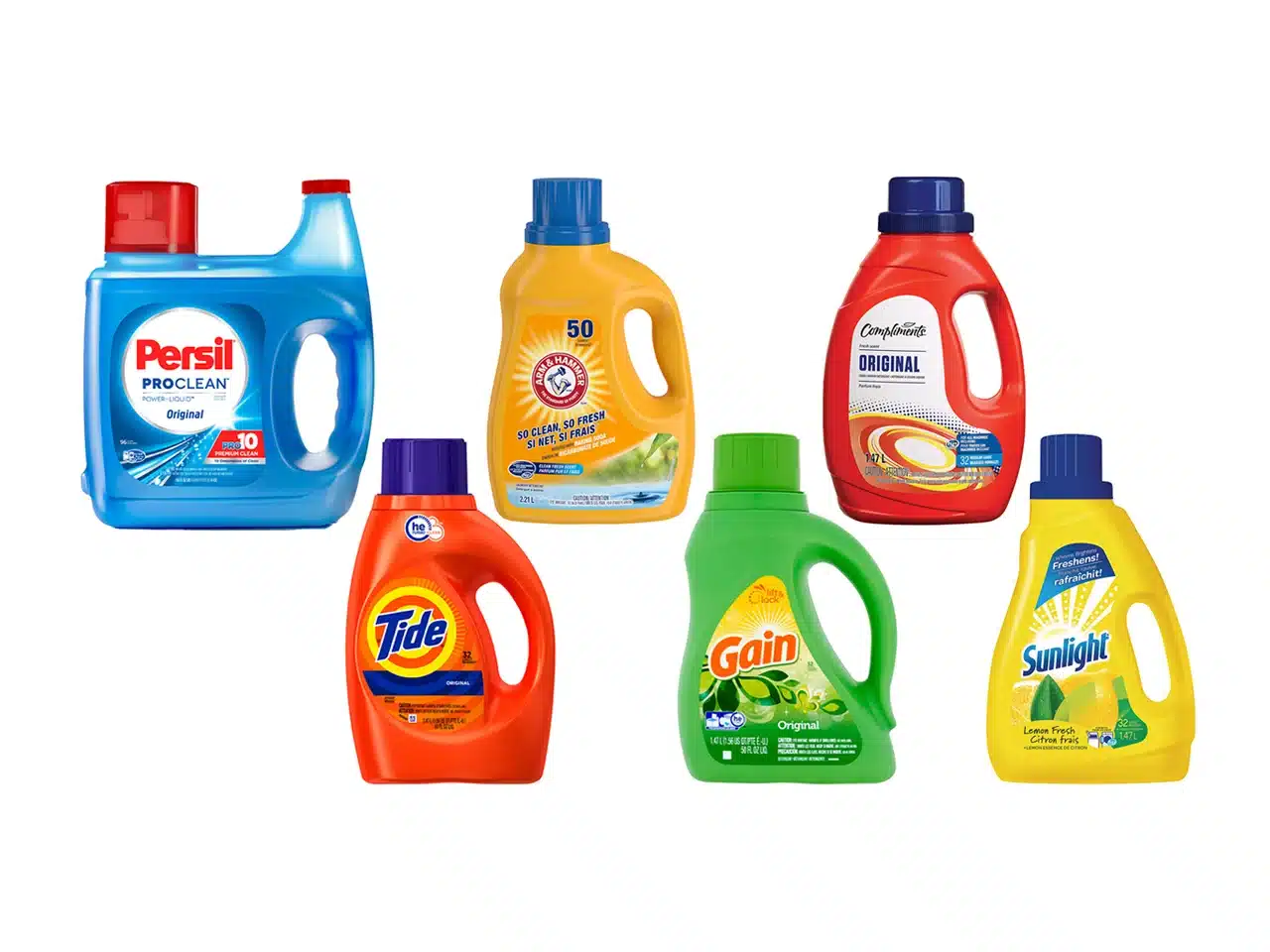Dry cleaning is a method commonly applied to garments and fabrics that are not suitable for conventional home washing and drying. But how does the dry cleaning process operate, and what impact does it have on your clothing?
Keep reading to learn more about the process from the point of garment tagging down to the collection.
Table of contents
What Is Drycleaning?
Dry cleaning closely resembles conventional home laundering, but it employs a liquid solvent for cleaning instead of water and detergent. This solvent, which contains minimal or no water, gives rise to “dry cleaning.”
Dry cleaners utilize large, technologically advanced dry-cleaning machines that are computer-controlled. Although your clothes undergo a wetting process, the liquid solvent evaporates much more rapidly than water.
Unlike washing machines that dispose of soiled water, the solvent is not drained; instead, it is recirculated through filters during the entire cleaning cycle to eliminate impurities released in the cleaning process. Subsequently, the solvent undergoes distillation to achieve crystal clarity and complete purification before being reused.
Drycleaning has two distinct advantages over cleaning with water or “wet” cleaning: Water swells the fibers. It is this swelling action that causes shrinkage and dye fading in many garments. Drycleaning solvents are much more superior to water in the removal of oily or greasy residues which are the base component of many stains.
After your clothes have been properly cleaned, your cleaner “finishes” (presses) your garments using specialized finishing equipment.
SEE ALSO: Getting Latex Paint out of Clothes – How to Get Paint Out of Clothes
Factors Determining The Cleaning Method
Four major factors determine whether a garment is cleaned in water or solvent:
- The types of soil present
- The fiber composition and garment construction
- The dye present in the fabric
- The nature of the various trims, linings, or other findings that may be used in the garment.
Many factors determine whether a dry cleaning or a wet cleaning process is compatible with a particular garment or textile article. Your professional cleaner, therefore, must use his or her professional judgment to determine which process will best restore the garment to a “new” condition.
READ ALSO: How Stamped Concrete Works
How Does Dry Cleaning Work?
Here’s a step-by-step outline of how dry cleaning works:
Step 1: Garment tagging
Upon the initial drop-off at the dry cleaner, each piece of clothing is assigned a distinctive number for identification purposes. This system aids busy dry cleaners in efficiently managing their customers’ garments and prevents the inconvenience of mistakenly returning the wrong items to customers upon completion of the process.
Step 2: Inspection and stain pre-treatment
Every garment undergoes a visual inspection, and if there are any stains, they are identified, marked, and pre-treated as required. Pretreatment involves the use of specialized chemicals designed for particular types of stains and fabrics.
At this stage, any embellishments or buttons are carefully covered with a soft cloth to shield them from potential damage during the dry cleaning process. In some cases, as an added precaution, certain dry cleaners may opt to remove embellishments and buttons.
READ ALSO: 15 Best Alarm Clocks For College Students | Ranking
Step 3: Place in the dry cleaning machine
The dirty clothing is placed inside a dry cleaning machine. The preferred organic solvent (or water, if the wet cleaning method is employed by your dry cleaner) is pumped into the machine while the clothing undergoes gentle agitation.
These machines are significantly larger than the washing machines commonly found in households but operate on the fundamental spinning function. Dry cleaning machines can be adjusted to spin at a much slower pace and offer more precise temperature control compared to home washing machines.
Step 4: A second inspection
After the dry cleaning cycle is completed, a thorough inspection is carried out on the garments to ensure the removal of all stains. Moreover, a close examination of buttons, embellishments, and seams is conducted to verify their integrity. In the event that any embellishments or buttons were detached during the initial inspection, they are now reattached.
Step 5: The finishing touches
Based on the fabric type, the dry cleaning involves pressing, ironing, or steaming each garment to eliminate wrinkles. Many dry cleaners utilize a form finisher at this stage—a machine that irons a garment using air or steam while maintaining its worn position.
This method ensures a smoother and more polished finish for the dry-cleaned clothing. Prior to being covered in plastic and returned to the owner, all garments undergo a final inspection.
How To Get the Best Results From Your Dry Cleaner
- Always check the labels: While it may sound like common sense, many individuals disregard or even remove the labels from their clothing. Prior to cleaning, your dry cleaner should always consult these labels. However, you should be proactive in drawing attention to any special care instructions or unique fabrics to ensure proper cleaning.
- Avoid attempting stain removal: The urge to remove a stain from clothing independently can be strong. Resist this temptation and promptly take the garment to your dry cleaner instead. Trying to remove the stain yourself may exacerbate the issue by driving the oil, dye, or food deeper into the fabric, making it more challenging or even impossible to eliminate.
- Make sure to highlight and identify any stains so that they can be accurately marked and pre-treated during the cleaning process.
- Point out Any Special Buttons or Embellishments: Certain clothing items come with fragile buttons or embellishments that demand special attention. As you may interact with a staff member who may not handle the actual cleaning, it’s essential to identify these elements and inquire whether they can be safeguarded or taken off during the cleaning process. Additionally, confirm if these items will be reattached as part of the service.
- Make special care requests in advance: Always emphasize any stains, delicate fabrics, or embellishments when you drop off your items. Avoid leaving things to chance or assuming that everything will proceed smoothly during the dry cleaning process. Engaging in a conversation with your cleaner will provide clarity.
SEE ALSO: How to Become a DoorDash Driver in | Full Step Guide
When Is Dry Cleaning Needed?
Depending on factors like the style of clothing you typically wear, the type of fabrics you wear, your lifestyle, and the climate where you live, the frequency with which you should dry clean your belongings may vary greatly.
Fortunately, many fabric items come with tags providing information on fabric content and cleaning and care instructions. Although the care instructions tag is a helpful starting point, determining the accuracy of these instructions is not always straightforward.
Dry cleaning is typically needed for items that are:
- Delicate or Sensitive Fabrics: Fabrics such as silk, wool, and cashmere are often more delicate and can be damaged by water and traditional washing methods.
- Garments with Special Finishes or Embellishments: Clothing items with special finishes, delicate embroidery, sequins, or beading may not withstand traditional washing and are better suited for dry cleaning.
- Stains That Require Special Treatment: Certain stains, such as oil-based stains, may not respond well to water and detergent. Dry cleaning solvents can effectively remove these types of stains.
- Structured Garments: Tailored or structured garments with interlinings, linings, and shoulder pads can lose their shape if washed in water. Dry cleaning helps maintain the structure and integrity of these items.
- Suits and Formalwear: Suits, tuxedos, and other formalwear often benefit from dry cleaning to preserve their shape, color, and overall appearance.
- Leather and Suede Items: These materials can be damaged by water, so dry cleaning is the preferred method for cleaning leather and suede garments.
- Items with Odors: Dry cleaning can effectively remove odors from clothing without the need for water.
FAQs On How Does Dry Cleaning Work
Dry cleaning uses a liquid solvent instead of water and detergent to clean clothes. The solvent contains minimal or no water, leading to the term “dry cleaning.” Unlike traditional laundering, dry cleaning doesn’t involve the use of water, and the process helps preserve delicate fabrics.
The most common solvent used in dry cleaning is perchloroethylene (perc). However, alternative solvents such as hydrocarbon and liquid silicone are also used. These solvents effectively remove stains and dirt from clothing without causing damage.
While many fabrics can be dry cleaned, it’s crucial to check the care label on each garment. Delicate fabrics such as silk, wool, and certain synthetics are often better suited for dry cleaning. Some fabrics may be sensitive to water and traditional washing methods.
While dry cleaning is effective for many types of stains, the success depends on the nature of the stain and the fabric
Conclusion
Drycleaning has two distinct advantages over cleaning with water or “wet” cleaning: Water swells the fibers. It is this swelling action that causes shrinkage and dye fading in many garments. Drycleaning solvents are much more superior to water in the removal of oily or greasy residues which are the base component of many stains.
References
- goodhousekeeping.com – What Is Dry Cleaning and How Does It Actually Work? Our Experts Explain
- thespruce.com – How Does Dry Cleaning Work?




